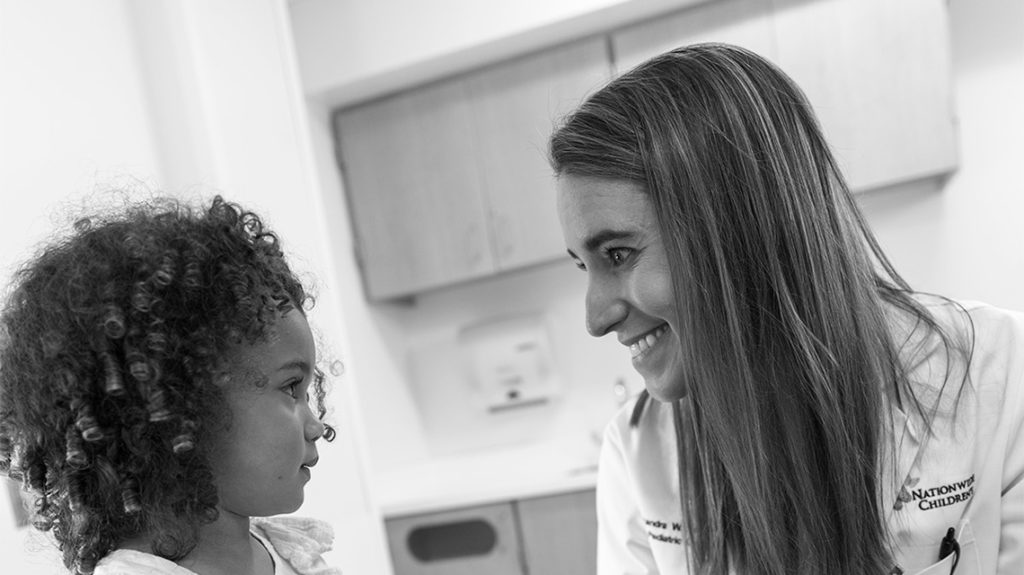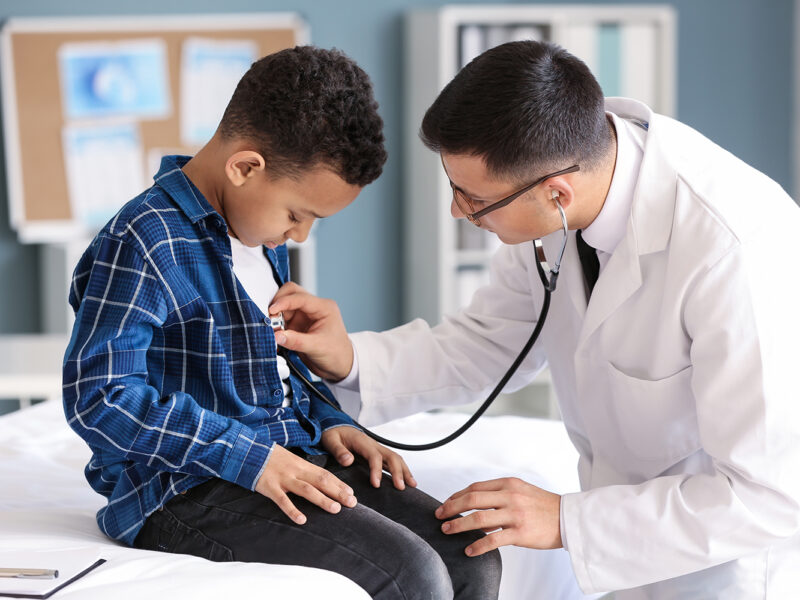Updated Guidance on Oral Food Challenges
Updated Guidance on Oral Food Challenges https://pediatricsnationwide.org/wp-content/uploads/2020/10/072519ds0736_header-1024x575.jpg 1024 575 Mary Bates, PhD Mary Bates, PhD https://secure.gravatar.com/avatar/c6233ca2b7754ab7c4c820e14eb518c8?s=96&d=mm&r=g- October 01, 2020
- Mary Bates, PhD

New report offers guidelines and examples for safely performing oral food challenges in clinical practice.
Oral food challenges are integral for allergists to diagnose food allergies. In 2009, the Adverse Reactions to Foods Committee within the American Academy of Allergy, Asthma & Immunology published a report providing guidance for safely conducting an oral food challenge. Now, an update to this report has been published that expands on previously established guidance and provides more practical information for clinicians and patients.
Irene Mikhail, MD, a physician in the Section of Allergy and Immunology at Nationwide Children’s Hospital and one of the updated report’s authors, says that even after the previous report came out, ambiguity remained about choosing patients to undergo an oral food challenge and the best way to perform them.
“The previous guidelines left much open to interpretation and to the discretion of the provider,” says Dr. Mikhail, who is also an assistant professor of Pediatrics at The Ohio State University College of Medicine. “This new set of guidelines clarifies and lays out more objective data to guide some of those decisions.
” The updated report supplements the previous publication with additional focus on safety; treatment of IgE-mediated allergic reactions; specific guidance for baked milk and baked egg challenges; psychosocial considerations for children and families participating in an oral food challenge; and special aspects of oral food challenges for infants, adults and research participants.
The new guidelines also offer specific examples of when to begin an oral food challenge as well as when a challenge should be stopped. There are tables and figures within the report, plus an extensive online appendix, that provide useful information for both patients and clinicians, including age-specific portion sizes, appropriate timing for antihistamine discontinuation, serum and skin test result interpretation, written consents and instructional handouts.
“Oral food challenges are extremely important for allergy medicine,” says Dr. Mikhail. “In a study last year, we found that even patients who failed their food challenge or had an allergic reaction during it still felt positively about the experience and felt they benefitted from the food challenge.”
Although patients may be eager to undergo an oral food challenge, Dr. Mikhail says that many providers remain nervous about them –– for good reason.
“You are potentially exposing the patient to something that could cause anaphylaxis,” she says. “I think because of that, providers are sometimes reluctant to offer food challenges.”
However, with food allergies on the rise, allergists can expect an increased need for oral food challenges.
“I’m hoping these guidelines will help providers feel comfortable with oral food challenges and allow them to use this tool more effectively,” says Dr. Mikhail. “If providers have more information, they can understand how they can safely implement oral food challenges in their practice.”
Reference:
Bird JA, Leonard S, Groetch M, Assa’ad A, Cianferoni A, Clark A, Crain M, Fausnight T, Fleischer D, Green T, Greenhawt M, Herbert L, Lanser BJ, Mikhail I, Mustafa S, Noone S, Parrish C, Varshney P, Vlieg-Boerstra B, Young MC, Sicherer S, Nowak-Wegrzyn A. Conducting an oral food challenge: An update to the 2009 Adverse Reactions to Foods Committee Work Group report. The Journal of Allergy and Clinical Immunology: In Practice. 2020;8(1):75-90.
Image credit: Nationwide Children’s
About the author
Mary a freelance science writer and blogger based in Boston. Her favorite topics include biology, psychology, neuroscience, ecology, and animal behavior. She has a BA in Biology-Psychology with a minor in English from Skidmore College in Saratoga Springs, NY, and a PhD from Brown University, where she researched bat echolocation and bullfrog chorusing.
-
Mary Bates, PhDhttps://pediatricsnationwide.org/author/mary-bates-phd/December 27, 2016
-
Mary Bates, PhDhttps://pediatricsnationwide.org/author/mary-bates-phd/
-
Mary Bates, PhDhttps://pediatricsnationwide.org/author/mary-bates-phd/
-
Mary Bates, PhDhttps://pediatricsnationwide.org/author/mary-bates-phd/
- Post Tags:
- Allergy and Immunology
- Posted In:
- Clinical Updates
- In Brief






